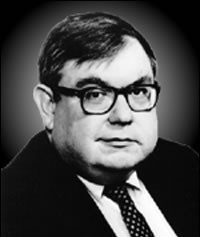 Samuel T. Francis
Samuel T. Francis
Championing
Western Civilization
and the great legacies of
Sam Francis and Joe Sobran
and their allies
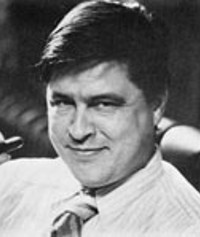 Joseph Sobran
Joseph Sobran
FGF Op-Ed
VIEW FROM THE NORTH
July 1, 2019
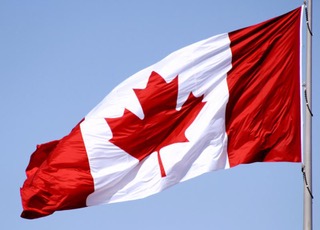
Canada Day
On the 152nd anniversary of Canadian Confederation:
the origins and development of Canada
by Mark Wegierski
Fitzgerald Griffin Foundation
Toronto, Canada — July 1, 2019 is Canada Day – the national holiday of Canada. Traditionally it was called Dominion Day. It is celebrated throughout Canada in a similar way to how the United States celebrates the 4th of July. All banks, government offices, and most businesses are closed. There are festivals, parades, concerts, and celebrations throughout the provinces. However, the patriotic aspects of the celebration are more muted in Canada than in the U.S. Although the national anthem is sung, the celebrations often focus on celebrating the diversity and multiculturalism of current-day Canada. Unfortunately Canada has developed far away from its origins.
Canada Day commemorates the 152nd anniversary of the Canadian Confederation. July 1, 1867 was the date on which the British North America Act (Canada’s original constitution) was passed. It was an Act of the British Parliament.
Canada Day commemorates the 152nd anniversary of the Canadian Confederation. July 1, 1867 was the date on which the British North America Act (Canada’s original constitution) was passed. It was an Act of the British Parliament.
Four provinces (Ontario, Quebec, New Brunswick, and Nova Scotia) formed the Confederation. It was also a union of two, long pre-existent nations, English Canada and French Canada (the latter mostly centered in the province of Quebec). The Aboriginal peoples were included insofar as they were traditionally considered to be under the special protection of the Crown.
The Canadian Constitution of 1867 was anti-revolutionary. What was called the Dominion of Canada was characterized by “peace, order, and good government” (in contrast to the American credo of “life, liberty, and the pursuit of happiness”).
The Canadian Constitution of 1867 was anti-revolutionary. What was called the Dominion of Canada was characterized by “peace, order, and good government” (in contrast to the American credo of “life, liberty, and the pursuit of happiness”).
Until 1896, the Conservatives under John A. Macdonald dominated the Canadian polity. Macdonald was a real nation-builder, extending the railways across the continent, thus bringing British Columbia into Confederation in 1871. He also suppressed the two Riel Rebellions of 1885 which stood in the way of a coast-to-coast Canada. However, the execution of Louis Riel for treason was a baneful act.
Indeed, in the 1896 federal election, French Quebec turned away from the Conservatives, voting en masse for the Liberal Party of Wilfrid Laurier.
Throughout most of the Twentieth Century, Quebec would overwhelmingly support the Liberal Party in federal elections, thus virtually guaranteeing a Liberal majority in the federal Parliament. However, until the 1963 federal election, this did not have socially radical implications for Canada, as the country was dominated by a “traditionalist-centrist” social consensus.
Throughout most of the Twentieth Century, Quebec would overwhelmingly support the Liberal Party in federal elections, thus virtually guaranteeing a Liberal majority in the federal Parliament. However, until the 1963 federal election, this did not have socially radical implications for Canada, as the country was dominated by a “traditionalist-centrist” social consensus. Indeed, even the social democratic third party, the Co-operative Commonwealth Federation (CCF), was mostly socially conservative. However, in 1961 the party changed its name to New Democratic Party (NDP), which suggested a more “futurist” orientation.
In the federal election of 1963, the staunch Tory John Diefenbaker was defeated by Liberal Lester B. Pearson. As Canadian traditionalist philosopher George Parkin Grant tells the tale, Diefenbaker was swept from office with the assistance of all of the managerialist and pollster expertise of the capitalist North American classes, who resented Diefenbaker’s refusal to accept U.S. nuclear weapons in Canada.
Lester Pearson introduced a major series of transformative reforms, the most crucially symbolic of which was the replacement of the Canadian flag in February 1965. The traditional Red Ensign was replaced by an abstract- looking red maple leaf, with a red and white flag suggestive of a Liberal Party logo.
Pearson introduced a major series of transformative reforms, the most crucially symbolic of which was the replacement of the Canadian flag in February 1965. The traditional Red Ensign (with the coat of arms of Canada and with the Union Jack in the upper left corner) was replaced by an abstract- looking red maple leaf, with a red and white flag suggestive of a Liberal Party logo. In political science, the replacement of a country’s flag is often seen as symbolic of “regime change.” The message of the flag change was cemented by the celebration of the Centennial of Confederation at Expo ’67 in Montreal, a celebration suffused with progressive imagery, suggesting a “re-Confederation.”
Also, the immigration policy was changed by Pearson to the “points system”, which suggested an opening to Third World immigration. Before the 1960s, Toronto was considered as so conservative and British-focused, it was nicknamed “Tory Toronto.” That was quickly changed by mass dissimilar immigration, to the point that Toronto now is “the most diverse city on the planet.”
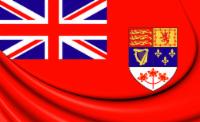
The Canadian flag until 1965
Also, the immigration policy was changed by Pearson to the “points system”, which suggested an opening to Third World immigration. Before the 1960s, Toronto was considered as so conservative and British-focused, it was nicknamed “Tory Toronto.” That was quickly changed by mass dissimilar immigration, to the point that Toronto now is “the most diverse city on the planet.”
1968, a year of revolutions around the globe, was marked in Canada by “Trudeaumania.” The charismatic Liberal Pierre Elliott Trudeau (later dubbed “the Northern Magus” or “the philosopher-king”) won a huge majority. In 1969, Prime Minister Trudeau legalized abortion and homosexuality. In 1971, he proclaimed Canada a multicultural society (at a time when 96 percent of the population was of European descent). Indeed, the initial definition of multiculturalism was mostly a recognition of non-English, non-French European groups – a definition that was quickly eclipsed in subsequent years by the valorization of so-called visible minorities. Trudeau promoted high immigration from the Third World. He also enacted extensive bilingualism policies, which amounted to a promotion of French.
In the 1972 federal election, Progressive Conservative leader Robert Stanfield fell only two seats behind the Liberals. The NDP declared their support for the Liberals, thus keeping them in power until 1974.
In 1974, the Liberals won another majority.
In 1969, Prime Minister Pierre Elliott Trudeau legalized abortion and homosexuality. In 1971, he proclaimed Canada a multicultural society (at a time when 96 percent of the population was of European descent).
In 1976, Joe Clark was selected leader of the Progressive Conservative party. In the 1979 election, Joe Clark unexpectedly won a minority government (a plurality of seats in the House of Commons). He was a real bungler. He made no effort to attract the six Creditistes from Quebec, who could have upheld a majority in the House of Commons. Joe Clark’s defeat in Parliament on a non-confidence motion in 1979 could have conceivably been won with the support of the five Creditistes. (One had earlier joined the P.C.s.)
In the 1980 election, after Trudeau came back from a supposed retirement, the Liberals won another majority. They were able to bring in the Constitution Act of 1982, most importantly encompassing the Charter of Rights and Freedoms. Trudeau called this “patriating the Constitution”. Considering that Canada had been given full self-government through the Statute of Westminster (1931) it was rather dubious that this “patriation” was even necessary. The Charter was characterized by both its supporters and critics as a virtual coup d’état. It basically set up nearly all of Trudeau’s most cherished principles as the highest law of the land. It also set the stage for an “activist judiciary”, where – unlike in the case of the United States – one would have been hard-pressed to find even one designated conservative on the Canadian Supreme Court.
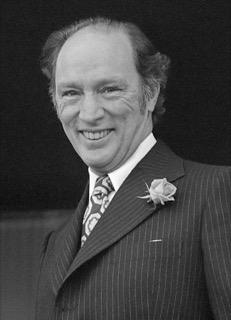
Pierre Trudeau, former Prime Minister of Canada
In the 1980 election, the Liberals won another majority. They were able to bring in the Constitution Act of 1982, most importantly encompassing the Charter of Rights and Freedoms. …It basically set up nearly all of Trudeau’s most cherished principles as the highest law of the land. It also set the stage for an “activist judiciary.”
Brian Mulroney replaced Joe Clark as leader of the Progressive Conservatives in 1983, but once in office he governed with an unusual timidity. Indeed, in an ironic reversal of Joe Clark, Mulroney governed as if he had won a minority government in 1984, rather than one of the largest parliamentary majorities in Canadian history. One of the most salient unconservative things Mulroney did was to raise the immigration numbers to a quarter-million persons a year (whereas they had actually fallen to 54,000 in Trudeau’s last year in office in 1983-1984). By now 75 to 80 percent of the immigration was from the Third World.
So-called “small-c conservatives” (or substantive conservatives) had had enough of Mulroney. In November 1987, Preston Manning co-founded the Reform Party of Canada – which was initially based solely in Western Canada. The party played a negligible role in the 1988 federal election, which Mulroney had framed as a referendum on Free Trade with the U.S. Actually, while it is considered Mulroney’s main “right-wing” accomplishment, Free Trade with the U.S. had traditionally been opposed by the Conservatives (who looked to Britain), and supported by the Liberal Party. Ironically, John Turner, the Liberal leader, who was patriotically arguing against the Free Trade deal, could be seen as more of a traditional conservative than Brian Mulroney. Nevertheless, the Progressive Conservatives won a majority in the 1988 federal election.
Prime Minister Brian Mulroney raised the immigration numbers to a quarter-million persons a year (whereas they had actually fallen to 54,000 in Trudeau’s last year in office in 1983-1984). By now 75 to 80 percent of the immigration was from the Third World.
The time of reckoning for the Mulroney Progressive Conservatives would come in the 1993 federal election, when, under the leadership of Kim Campbell, they won only two seats. They were caught between the rise of the Reform Party in Western Canada (52 seats), and the Bloc Quebecois in Quebec (54 seats). The Liberals won a majority under Jean Chretien. The Reform Party had become a Canada-wide party by 1991.
The failure of the 1995 Quebec sovereignty referendum – which came within a fraction of a percentage of success -- was a turning point which failed to turn. Ironically, the success of the referendum could have had a profoundly conservatizing effect on English-speaking Canada, as it would have betokened the failure of the long-standing Liberal vision of Canada. Presumably, Preston Manning would have been in a good position to pick up a majority of seats in English-speaking Canada, should an election have been held in the wake of the referendum.
The failure of the 1995 Quebec sovereignty referendum which came within a fraction of a percentage of success -- was a turning point which failed to turn.
As a result of the United Alternative initiative, the Reform Party was re-named the Canadian Alliance, or, more fully, the Canadian Reform and Conservative Alliance. The Canadian Alliance was opened up to a leadership selection process. The former Alberta Treasurer, Stockwell Day, rallied so-called “social conservatives” to wrest the leadership away from Preston Manning. Stockwell Day gave the impression of being a young, dynamic leader.
However, Joe Clark (the leader of the federal P.C.s since 1998) still refused to come on board with the Canadian Alliance in the 2000 federal election. Stockwell Day was accused of being a “fundamentalist Christian extremist,” and the label stuck with many voters. In the 2000 federal election, the Canadian Alliance received a quarter of the popular vote, winning 66 seats, 64 in Western Canada and two in Ontario.
Stockwell Day who gave the impression of being a young, dynamic leader, was accused of being a “fundamentalist Christian extremist.”
In 2001, the constant sniping at Stockwell Day by the Liberal Party and the media induced a caucus revolt in the Canadian Alliance, which at one point encompassed thirteen M.P.s. Stockwell Day was forced to call for a leadership election. Although Stockwell Day ran as a candidate for the leadership, it was Stephen Harper who won the leadership.
Joe Clark finally having retired from the leadership of the federal P.C.s, the stage was set for the merger between the Canadian Alliance (led by Stephen Harper) and the federal P.C.s (led by Peter MacKay), which was finalized by December 2003. In an electrifying move, the adjective “progressive” was dropped from the name of the new party, now simply being called the Conservative Party of Canada.
The new party immediately became more competitive on the federal scene. Stephen Harper won the leadership of the new Conservative Party. In the 2004 federal election, the Liberals under Paul Martin, Jr. were reduced to a minority government.
Stephen Harper finally won a majority in 2011. This was the first putatively conservative majority since that won in 1988. The arrival of a Conservative majority government failed to see any significant enactment of substantively conservative policies.
In November 2005, the Liberals were finally defeated in Parliament, when the NDP joined in to vote against them.
In the ensuing federal election of 2006, Stephen Harper won a minority government. He kept himself in power by pursuing mostly moderate, centrist policies. In 2008, Harper himself called an election, and won a stronger representation, although a majority still eluded him. Finally, in 2011, the Conservatives were defeated in Parliament. However, Harper finally won a majority in 2011. This was the first putatively conservative majority since that won in 1988.
Harper continued with largely centrist policies, although he had won a majority, thus disappointing many “small-c conservatives.” Indeed, in the area of immigration policy, the high levels apparently set in stone since Mulroney continued unabated. The arrival of a Conservative majority government in 2011 (after two minority governments), it is argued, failed to see any significant enactment of substantively conservative policies, despite the frequently overheated rhetoric of its liberal opponents.
Justin Trudeau’s victory in 2015 was a signal for a new progressive surge in Canada, of the overturning of whatever fragmentary conservative measures Harper may have been able to introduce. Indeed, Justin Trudeau declared Canada the world’s first “post-national state.” And now, Trudeau is proposing a Digital Charter to combat ill-defined “hate on the Internet.”
Justin Trudeau’s victory in 2015 was a signal for a new progressive surge in Canada of the overturning of whatever fragmentary conservative measures Harper may have been able to introduce. Indeed, Justin Trudeau declared Canada the world’s first “post-national state.” And now, Trudeau is proposing a Digital Charter, to combat ill-defined “hate on the Internet,” as well as establishing a program to give Canadian mainstream media outlets close to six hundred million dollars over six years. This is on top of the yearly 1.5 billion dollar subsidy to the Canadian Broadcasting Corporation (CBC).
In the 2017 federal Conservative leadership contest, Maxime Bernier came within a fraction of a percentage point of winning. Had he won, there would have been a united, somewhat more “small-c conservative” Conservative Party contesting the upcoming 2019 federal election rather than Bernier’s quixotic People’s Party of Canada initiative.
It seems rather disappointing to conservatives that after all the efforts of the Reform Party, and the years in the wilderness between 1993 and 2004, the current Conservative Party still does not appear to be substantively conservative. The whole point of the Reform Party was to create one, more substantively conservative, party on the political scene in Canada.
However, the Conservatives have been handed “a gift” with the SNC-Lavalin scandal. It may be possible that Scheer will simply stumble into a victory.
The currently untempered, unceasing mass dissimilar immigration, will almost inevitably decisively transmogrify Canada.
However, this would be a rare bit of good luck for the Right in Canada. It could be argued that, in the decades since the 1960s, whenever there was an opportunity for the Right to score a major victory in Canada, it almost always became a fateful fork in a road not taken. The result of this ongoing failure is that the Canadian polity has become seriously unbalanced.
With the passing years, it becomes less and less likely that any kind of substantively conservative party will ever come to power in Canada. Also, the currently untempered, unceasing mass dissimilar immigration, will almost inevitably decisively transmogrify Canada.
It is argued that to have such one-sided politics in Canada is a contradiction of Canada’s longstanding traditions and history, as well of democracy itself.
###
View From The North is copyright @ 2025 by Mark Wegierski and the Fitzgerald Griffin Foundation, www.fgfBooks.com. All rights reserved. Please forward this copyright info and links when sending to friends and colleagues.
Mark Wegierski is a Toronto-based writer, social critic, and historical researcher and is published in major Canadian newspapers, as well as in U.S. scholarly journals such as Humanitas, Review of Metaphysics, and Telos, and in U.S. magazines such as Chronicles and The World & I. His writing has also appeared in Polish, British, and German publications.
Help us publish articles on Western civilization from knowledgeable domestic and foreign writers. Please consider giving a tax-deductible donation to FGF online.
Or send a check to: Fitzgerald Griffin Foundation344 Maple Avenue West, #281
Vienna, VA 22180
1-877-726-0058
publishing@fgfbooks.com
Or call toll-free at 1-877-726-0058 to donate by phone. For more information, write to Fran Griffin at fgf@fgfBooks.com
Sign-up to receive weekly columns.